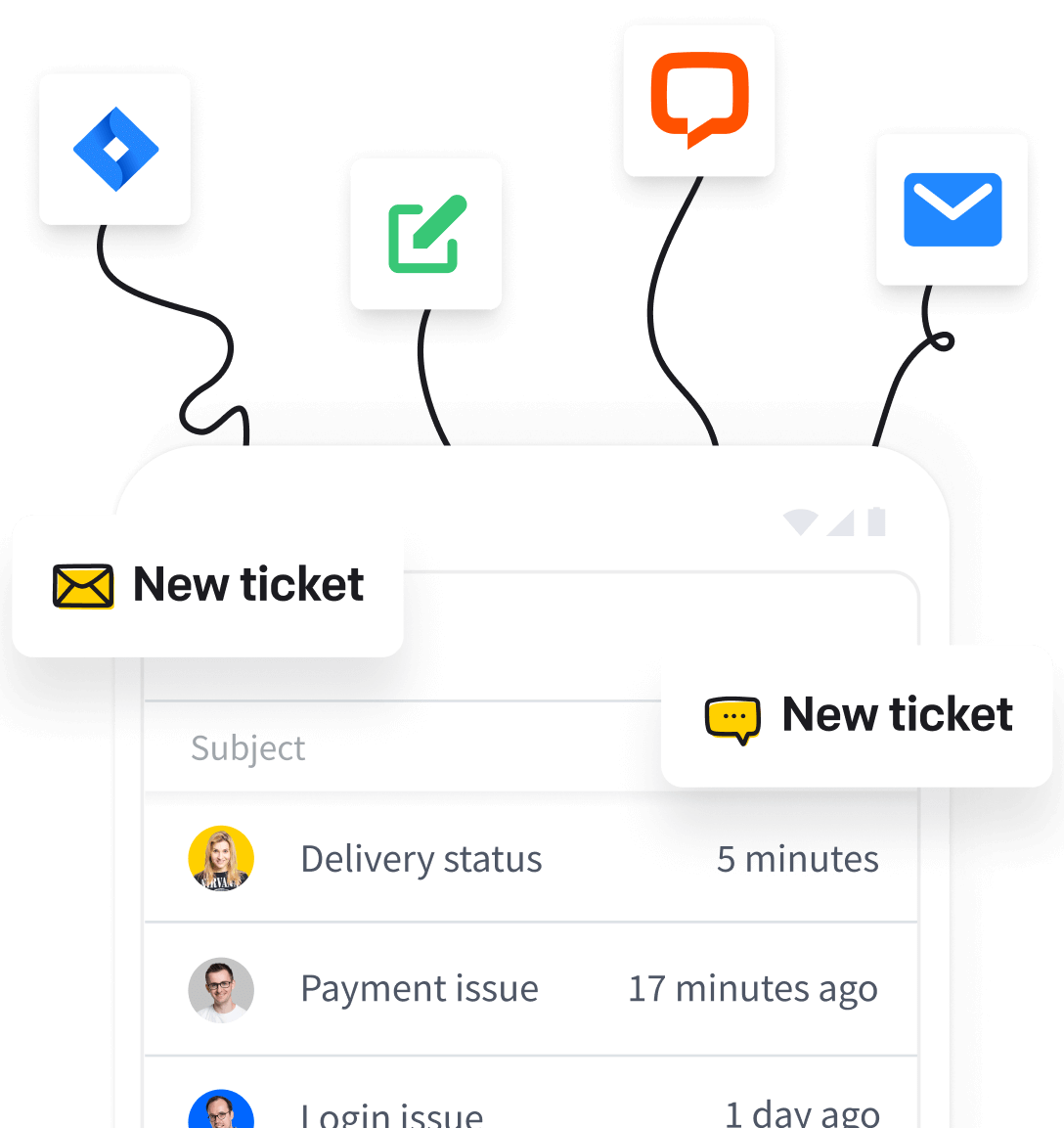The Importance of Customer Interactions in Customer Service
Zuzanna Bocian

At the core of customer service lies the concept of “customer interactions,” encompassing every touchpoint where your business engages with its buyers. Exceptional service delivery relies on effective interactions, such as answering inquiries, resolving issues, soliciting feedback, and offering assistance.
Our journey into customer interactions begins with exploring their definition, significance, and measurable impact. Let’s dive deep into the metrics used to evaluate their effectiveness, from satisfaction scores to customer retention rates, illuminating their direct correlation with business outcomes.
However, understanding the importance of customer interaction is only the beginning. Armed with this knowledge, you’ll embark on a quest to uncover practical strategies and best practices for optimizing customer interaction in the context of customer service.
Drawing upon real-world examples and industry insights, I’ll provide actionable tips for enhancing communication, resolving issues, and exceeding customer expectations.
What are customer interactions?
Customer interactions are crucial in shaping the overall customer experience and are integral to the success of businesses, particularly in service-driven markets.
They are the foundation upon which customer relationships are built and nurtured, driving satisfaction, loyalty, and advocacy.
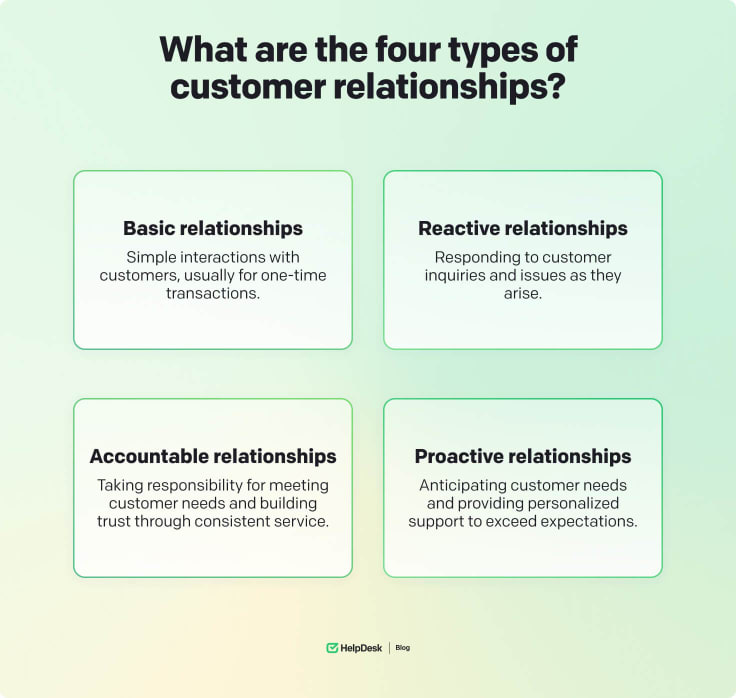
Why do effective interactions matter in business success?
It’s important to understand that effective customer interactions are not just a coincidence but a necessity for any business’s success. Nowadays, where customer experience is the main factor that sets businesses apart from their competitors, perfecting the art of customer interactions is crucial.
Businesses that excel in customer interactions are better positioned to meet customer needs, exceed expectations, and build lasting relationships. You can gain a competitive edge, drive growth, and increase profitability by prioritizing exceptional customer experiences.
Build better customer relationships. ✅Keep your customers close with HelpDesk ticketing software. Try it for free! 🚀
Customer interactions from in-person to online
Customer interactions occur across various settings and channels, from in-person interactions at brick-and-mortar stores to online exchanges through websites, emails, and social media platforms. Whether conducted face-to-face or virtually, each interaction presents unique opportunities and challenges for connecting with customers.
Types of customer interactions
Several distinct types emerge within customer interactions, each serving a specific purpose in the customer journey.
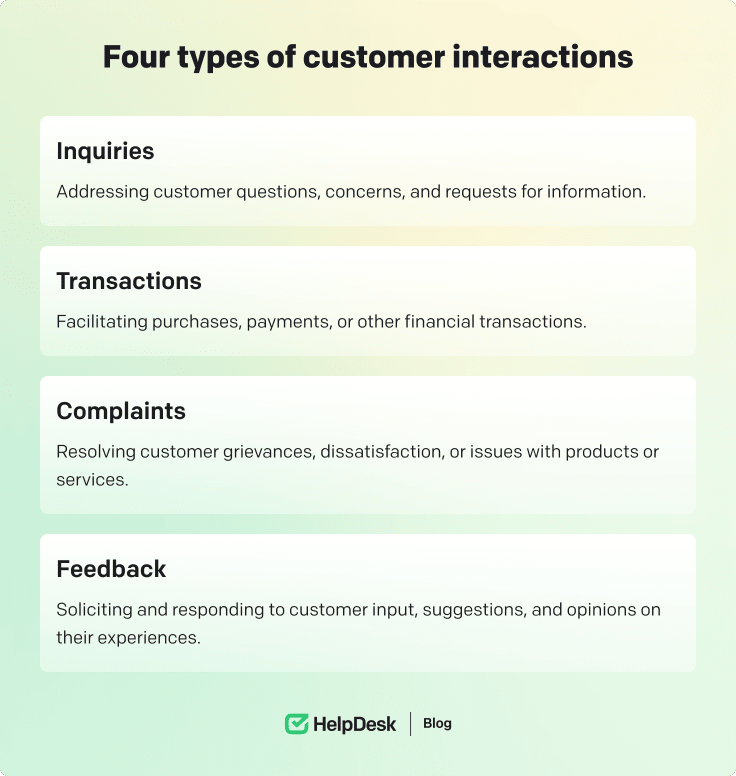
Each type of interaction presents unique opportunities for businesses to demonstrate their commitment to improving customer satisfaction and service excellence.
First impressions in customer service
The first interaction between a customer and a business is crucial, as it can significantly influence their perception and loyalty towards the brand.
Warmth, competence, and trustworthiness are crucial in shaping the customer’s first impression. Positive first impressions can increase satisfaction, loyalty, and advocacy, while negative feedback can impact the brand’s image and customer relationships.
You can take proactive steps to ensure positive initial interactions by understanding the impact of first impressions and utilizing psychological insights. This can set the stage for long-term success in customer service.
Learn more about customer relations in our Learning Space Guide. 🧑🚀 Be the best partner for your customers 🤝
How do positive customer interactions impact loyalty?
Positive customer interaction, facilitated by HelpDesk, profoundly fosters loyalty and encourages repeat business. Customers who positively interact with a brand are more likely to become repeat customer advocates for the company.
Moreover, positive customer interaction, supported by HelpDesk, contributes to higher levels of customer satisfaction, leading to increased brand loyalty. Customers who feel valued and appreciated are likelier to continue doing business with a company over time, even if competitors offer similar products or services.
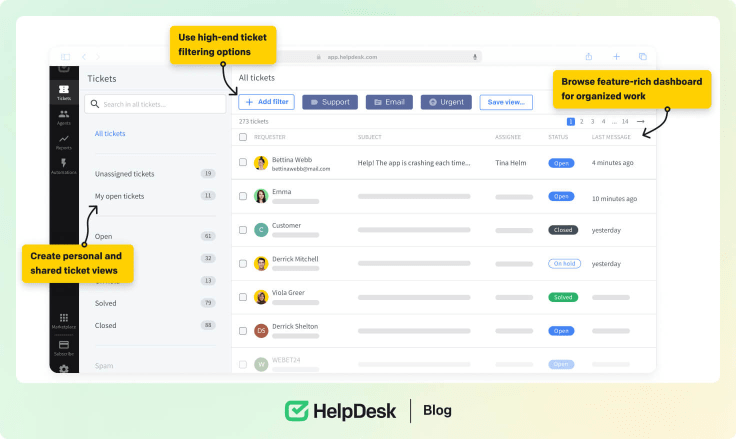
Real-life examples of successful customer interactions
To illustrate the impact of positive customer interactions, let’s examine a few real-world examples:
-
Zappos: Zappos, an online shoe and clothing retailer, is renowned for its exceptional customer service. One of their most famous customer interaction management stories involves a representative who spent over 10 hours on the phone with a customer, helping them find the perfect pair of shoes. This dedication to customer satisfaction has earned Zappos a reputation for unparalleled service and has contributed to its success in building a loyal customer base.
-
Ritz-Carlton: The Ritz-Carlton hotel chain is known for its legendary customer service. In one instance, a family staying at a Ritz-Carlton property lost a stuffed giraffe belonging to their young son. The hotel staff located the toy and sent it back to the family with a photo album documenting the giraffe’s extended stay, complete with captions describing its adventures. This thoughtful gesture exemplifies the Ritz-Carlton’s commitment to creating memorable experiences for its guests and has cemented its reputation as a leader in luxury hospitality.
-
Amazon: Amazon’s relentless focus on customer satisfaction is evident in its interactions. From personalized recommendations to hassle-free returns, Amazon goes above and beyond to exceed customer expectations. This dedication to customer service has contributed to Amazon’s dominance in the ecommerce industry and has helped solidify its position as a trusted and beloved brand.
Understanding the psychological and emotional components of customer satisfaction
Customer satisfaction is not only about fulfilling functional needs but also includes emotional and psychological elements. Customers who interact positively with your brand feel trust, appreciation, and loyalty towards it.
Psychological factors such as perceived value, trustworthiness, and reliability significantly shape customer satisfaction. Customers are more likely to be satisfied with a brand when they feel their needs are being met and the brand is acting in their best interests.
Emotional components such as empathy, kindness, and gratitude also considerably impact customer satisfaction. Showing empathy and understanding toward your customers’ concerns can build strong emotional connections and foster long-term loyalty.
Measuring customer interactions
It’s crucial for your business striving to provide exceptional customer service to understand and measure customer interactions.
Importance of metrics and data
Metrics and data are indispensable tools for evaluating the effectiveness of customer interactions. By leveraging data-driven insights, businesses can understand how customers engage with their brand, identify areas for improvement, and make informed decisions to enhance the overall customer experience.
For example, HelpDesk can offer robust analytics capabilities, allowing you to track various metrics such as response time, resolution rate, and customer satisfaction scores. These metrics provide valuable insights into the quality of customer interactions and enable businesses to measure their performance against set benchmarks.
Analyze like a PRO with HelpDesk. Improve your customer satisfaction – try our free 14-day trial 🚀
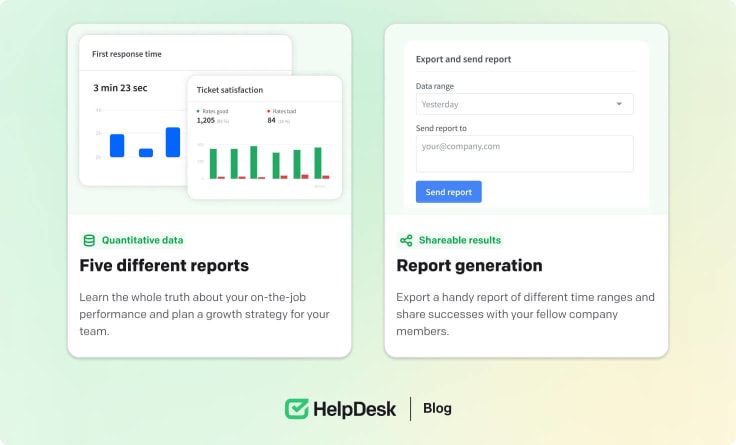
Introducing common key performance indicators (KPIs)
KPIs are benchmarks for measuring customer interactions. There are many factors you should consider:
-
Customer satisfaction score (CSAT): CSAT measures the satisfaction level of customers after interacting with a business. It typically involves asking customers to rate their experience on a scale and providing valuable feedback on the quality of service provided.
-
Net promoter score (NPS): NPS measures customer loyalty by gauging the likelihood of customers recommending the business to others. It helps businesses identify promoters (loyal customers), detractors (dissatisfied customers), and passives (neutral customers), enabling targeted efforts to enhance customer loyalty.
-
Customer effort score (CES): CES evaluates the ease with which customers interact with a business to resolve their issues or queries. It assesses the overall convenience of the customer experience, highlighting areas where improvements are needed to reduce customer effort.
By tracking these KPIs, you can gain valuable insights into the effectiveness of customer interactions, take proactive steps to improve performance, and drive business growth.
Methods for collecting and analyzing customer feedback
Collecting and analyzing customer feedback is essential for gaining deeper insights into customer preferences, pain points, and satisfaction levels.
Here are some of the methods to gather feedback:
-
Surveys: Conducting surveys allows businesses to gather structured customer feedback about their experience.
-
Social media monitoring: Monitoring social media channels enables businesses to track customer sentiment, identify trends, and address customer concerns in real time.
-
Direct customer interviews: Conducting direct customer interviews gives businesses qualitative insights into customer experiences and preferences.
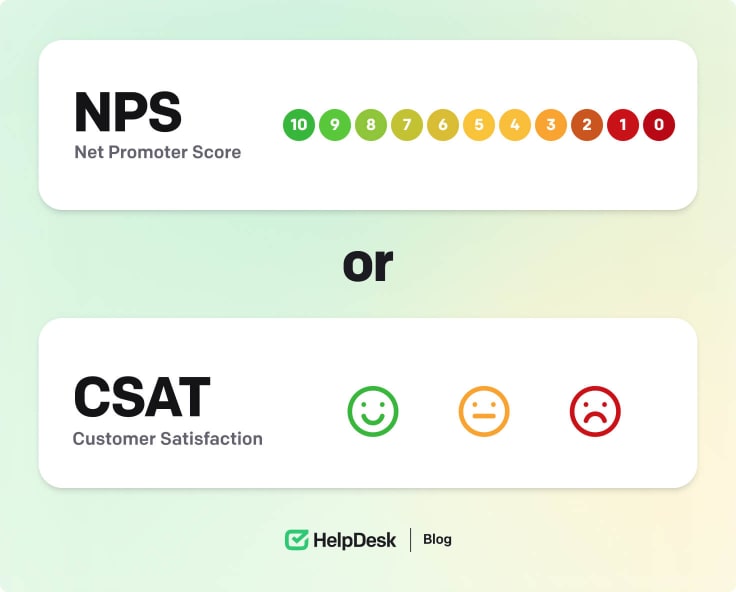
10 tips for enhancing customer interactions
Let’s review ten comprehensive tips to elevate your customer interactions and drive positive outcomes:
1. Comprehensive training programs
Invest in comprehensive training programs for customer service representatives. Ensure they have the skills and knowledge to handle diverse customer inquiries and issues effectively. Training should cover communication techniques, product knowledge, and conflict-resolution strategies.
2. Utilizing advanced technology solutions
Leverage innovative technology solutions to streamline customer interactions and provide seamless support across multiple channels. Implementing robust customer interaction software can automate processes, track customer inquiries, and improve customer interactions and response times, enhancing the overall customer experience.
3. Adopting a customer-first mindset
Cultivate a customer-first mindset within your organization, where the needs and preferences of existing customers are prioritized in every interaction. Encourage employees to go above and beyond to exceed customer expectations and deliver personalized service.
4. Promoting empathy and understanding
Train your customer service representatives to empathize with customers’ concerns and demonstrate genuine understanding and compassion. Empathy is a powerful tool for building rapport and establishing trust with customers, leading to more positive interactions.
5. Practicing active listening
Encourage active listening skills among your employees, where they focus on understanding the customer’s needs and concerns without interrupting or jumping to conclusions. Active listening fosters clearer customer communication and helps employees provide more relevant and effective solutions.
6. Enhancing problem-solving skills
Equip your customer support team with strong problem-solving skills to address customer issues efficiently and effectively. Provide them with the tools and resources to identify root causes, brainstorm solutions, and resolve issues promptly.
7. Personalizing interactions
Tailor customer interactions to individual preferences and history by leveraging customer data and insights. Personalization can involve addressing customers by name, referencing past interactions, and offering personalized recommendations or solutions based on their needs.
8. Providing timely responses
Aim to promptly respond to customer inquiries and concerns, minimizing wait times and demonstrating responsiveness and reliability. Implement processes and workflows to address customer inquiries promptly, even during peak periods.
9. Seeking feedback and continuous improvement
Regularly solicit feedback from customers about their interactions and experiences with your brand. Use this constructive feedback to identify areas for improvement and implement necessary changes to enhance the customer experience continuously.
10. Cultivating a positive work culture
Foster a positive work environment that values teamwork, collaboration, and employee well-being. Happy and engaged employees are likelier to deliver exceptional customer service, leading to more positive interactions and satisfied customers.
The role of empathy, active listening, and problem-solving skills
When achieving the best customer interaction, three attributes are essential: empathy, active listening, and problem-solving skills.
Empathy is the ability to understand and share another person’s feelings. In customer service, empathy means putting oneself in the customer’s shoes and understanding their perspective, emotions, and needs. When customer service representatives show empathy towards customers, it creates a sense of connection and rapport, fostering trust and loyalty.
Active listening goes hand in hand with empathy and is equally vital. It involves fully concentrating on what the customer is saying without interrupting or formulating responses prematurely. It requires hearing the words spoken by the customer and understanding the underlying emotions and concerns behind those words.
Finally, problem-solving skills are essential for effectively addressing customer issues and concerns. Customer representatives will likely encounter challenges and obstacles that require quick and effective resolution. Strong problem-solving skills enable representatives to analyze the situation, identify the problem’s root cause, and develop appropriate solutions.
Therefore, empathy, active listening, and problem-solving skills are integral to enhancing the customer interaction cycle. By prioritizing and incorporating these attributes into your customer service practices, you can create positive customer experiences, build strong relationships, and ultimately differentiate yourself in the marketplace.
Investing in training and development programs to cultivate these communication skills among customer service representatives can yield significant dividends in customer satisfaction, loyalty, and long-term success.
🤖 Use AI-based HelpDesk features to streamline communication and respond within seconds. Try the ticketing system for 14 days for free!
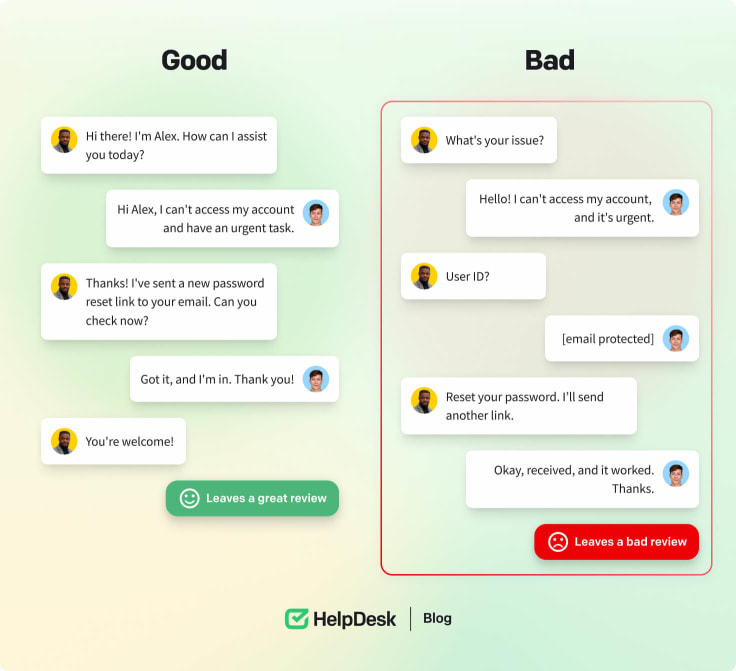
Summary
Empathy, active listening, and problem-solving skills are essential in enhancing customer service interactions. With HelpDesk’s technology solutions, you can streamline and manage customer interactions, automate processes, and provide seamless support across multiple channels, enhancing overall efficiency and customer satisfaction.
Good customer service representatives can demonstrate understanding and compassion, fostering customer trust and loyalty by practicing empathy. Active listening ensures customers feel heard and valued, leading to more meaningful interactions and effective problem resolution.
In addition, strong problem-solving skills, empowered by HelpDesk’s comprehensive analytics tools, enable representatives to address customer concerns promptly and efficiently, further enhancing the overall customer experience.


Get the cheat sheet for solving customer tickets
Join our newsletter to receive your cheat sheet and other amazing content directly in your inbox.
Success! You're one click away from the cheat sheet 👇
Open now